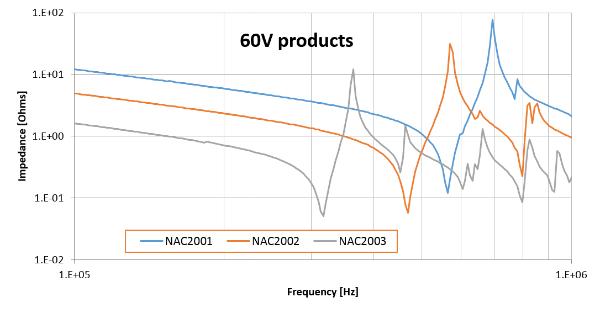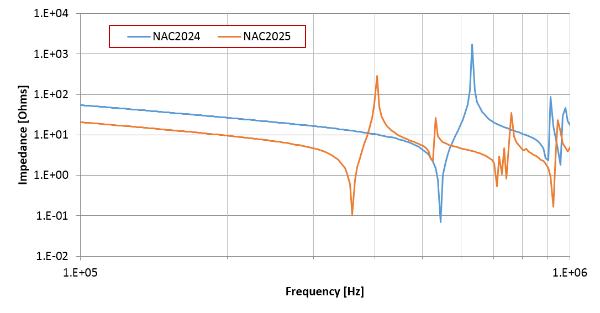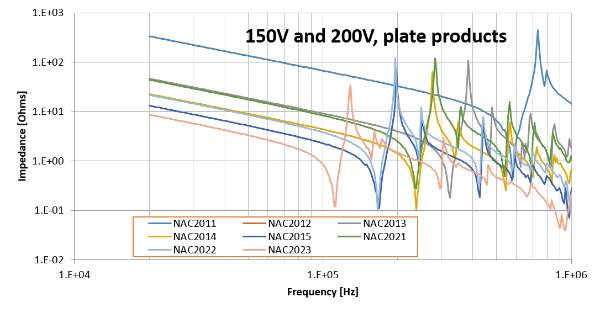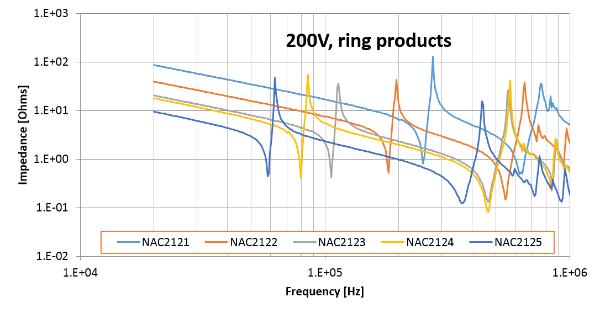It is sometimes useful to estimate the frequency response of a multilayer stack in free conditions. The task is not straightforward, but it is usually possible to generate good estimates of the first resonance. Depending on the configuration, this first resonance can be a thickness mode or a width/radial/hoop mode.
For high stacks (“elongated rod” assumption), the first resonance will be a thickness mode. The first thickness resonance Ft can be estimated using the formula:
Ft=N3/H
With H the height of the stack, and N3 a material constant. Experimentally, N3 differs slightly from the catalog value, which is obtained on monolayer components of a specific geometry. We recommend using the typical values below:
Typical N3 value for multilayer stacks, free-free conditions:
- NCE51 and NCE51F: 1200 Hz.m
- NCE46: 1400 Hz.m
For example on NAC2003-H12, the first thickness resonance in free conditions will be 100kHz (typical value).
The thickness resonance is divided by 2 if the actuator is in blocked-free conditions. Attached load (mass) further reduces the value.
For short and wide stacks (“thin plate” assumption), a width/radial/hoop resonance will be the first one to occur. This type of resonance depends on the cross-section of the actuator. The graphs below illustrate the frequency response of Noliac’s range of single elements, for which the first radial resonance can be identified.
If a thickness resonance and a radial resonance are close to each other, they tend to interact. The case is not ideal (neither an “elongated rod” nor a “thin plate”), so the mode shapes are more complex and frequencies can vary.






